No older notifications. iMessage read yesterday at 17:28. No reaction. I push forward, past the endless stretch of the hallway. The hum of the moving walkways. The shuffle of disoriented travelers. The heavy silence around. I glance at my phone once again. No older notifications. iMessage read yesterday at 17:28. No reaction. Alas, I resign. I buy a pack of gummy bears and open my book.
Going back has become unsettling. At least recently. Something has changed. I don't know if I like these changes. I don't know if these changes like me. All I know is—I'd rather stay. But duty calls. Two shifts a year. Like a factory worker.

But all these people—going there—make me shiver. They represent everything I tried to leave behind. Everything I ran away from. Everything I once believed I could escape. Their looks. Their docility. Their compliance. Their meanness. Their selfishness. Their lack of thought. The way they accept a narrative without question. The way they repeat what they've been thought. Everything. They are the ones who voted for that joke of a man. The ones who would do it again, in even greater numbers. The ones who trust him more than anyone. The ones who would take to the streets for him, chanting, shouting, convinced they are right.
For months now, Romania has stood at the eye of the political storm. Ever since last December’s annulled presidential elections, voices across the spectrum have rushed to decry the country’s so-called democratic backsliding on NATO’s eastern flank. The European Commission held TikTok accountable for fueling mass misinformation. Meanwhile, Elon Musk and JD Vance—the usual culprits—rushed in with their own theories, echoing the far-right. They argued the elections should have never been annulled. They claimed the will of the people must be upheld. Even if that means democracy itself collapses.
And now, the rerun: candidacy rejected. Decision upheld by the Constitutional Court. Protests organized by the far-right. Elon Musk, high on ketamine, live-tweeting. Yet all the op-eds, analyses, think pieces are obsessed with the political system. With that joke of a man. With the three far-right parties in parliament. Meanwhile, the real issue—ignored. Overlooked. Sidelined. Never held accountable. Never seen for what it is.
The people. The voters. The masses. The ones who enabled it. The problem.
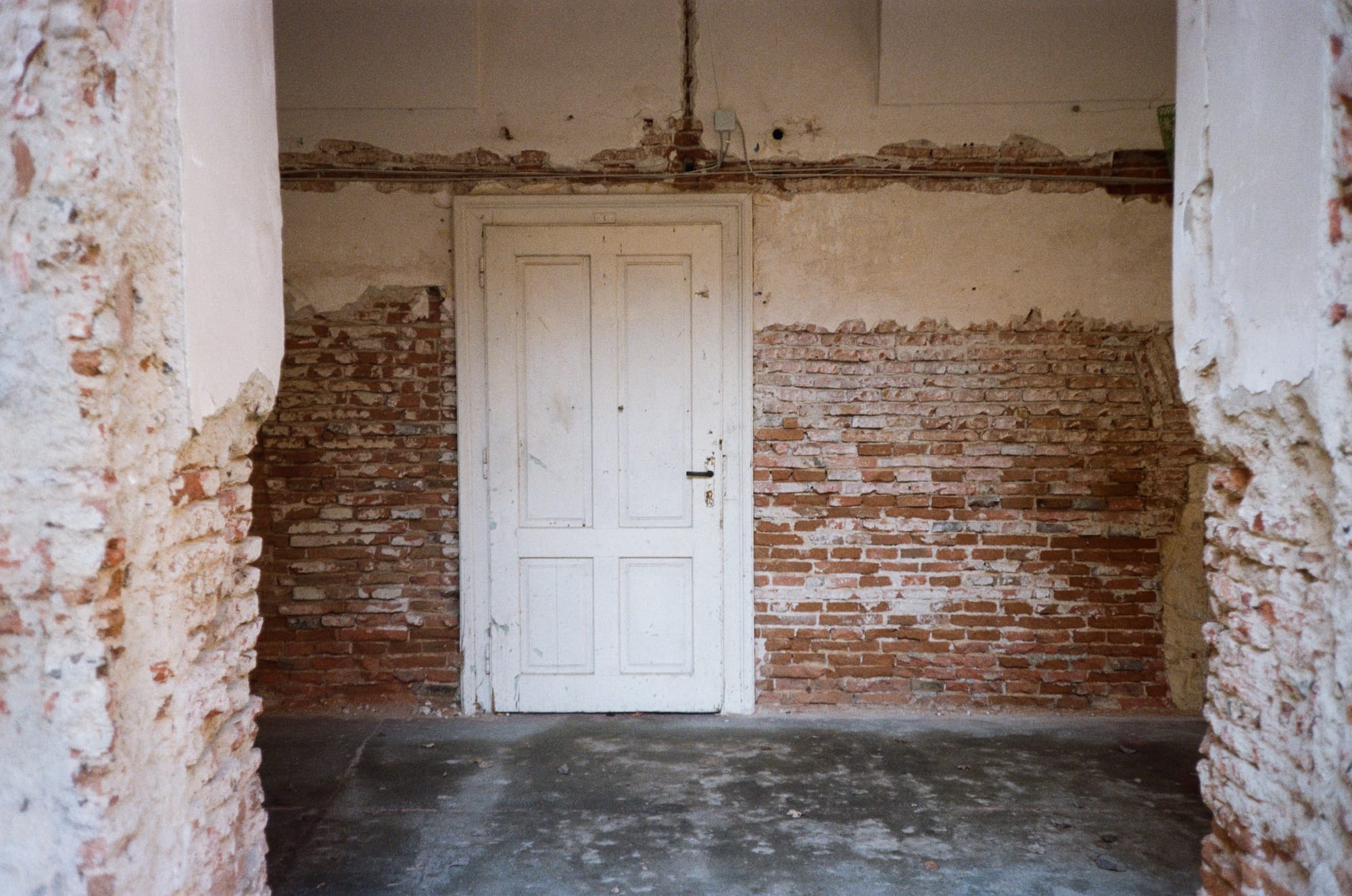
Memories flood in. Tears roll down my cheeks. The long, soulless hallway. The departure screens flickering. And then, another hallway resurfaces. The one in my childhood home. Gloomy. Endless. Lined with my mother's high heels. I remember the school hallways. Dark. Empty. Reeking of childhood games, Madonna dances and mysteries. The other hallways, 500m up the road, where we filmed German class projects. These hallways held everything. Our laughter. Our joy. Our fears. The vile comments about last weekend's party. The girls who had done too much. The ones who hadn't. The ones mocked for their lack of skill. Their hesitation. Their bodies. The crude body shaming. The whispered insults directed at me. My feline walk. The way I spoke. The way I moved. The eternal question. Do you have a girlfriend?
The other hallways—on the other end of town—remind me of scoldings. Behave properly. Fit the mold. Diversity is uncanny. A perversion of the west. A corruption of the orthodox body of thought. And for those who don't fit? A tragedy of sadness. An epidemic of loneliness. Misunderstood. Ostracized. In a place that tolerates diversity only for ten days a year. All because of the theatre festival and its fake glamour. But not out of conviction. Not because diversity means anything here. But because it sells. Tourism. Money. Fame.
And then I wonder. How can a society heal if it's rotten at its core? How could I be surprised by the outcome when the election result is merely a reflection of everything I ran from? It isn't a glitch in the system. It's the natural course of things. Blaming the voters feels futile. Almost ludicrous. Excuses are made. Culprits named. Russia, of course. Suddenly, Romania is a forerunner in the fight against disinformation. The lighthouse in the east, as one of my professors at university put it. Against Russian influence. Against destabilization. A country fighting for its soul. Proving it can play Russia's game—and win.
Maybe that’s true. Maybe the effort to salvage democracy is commendable. But despite my deep aversion to the Russian political machine, the truth is simpler. Duller. The crooks were never foreign. The crooks were always here. The people. The ones with little to no education. The ones who spent their lives learning how to cheat the system. The ones trained to obey, not to think. The ones who lack even the most basic comprehension skills. No wonder they fell for the Russian playbook. After all, what else can be expected from a country where functional illiteracy surpasses 50%—the highest in the European Union? This. This is the real problem.
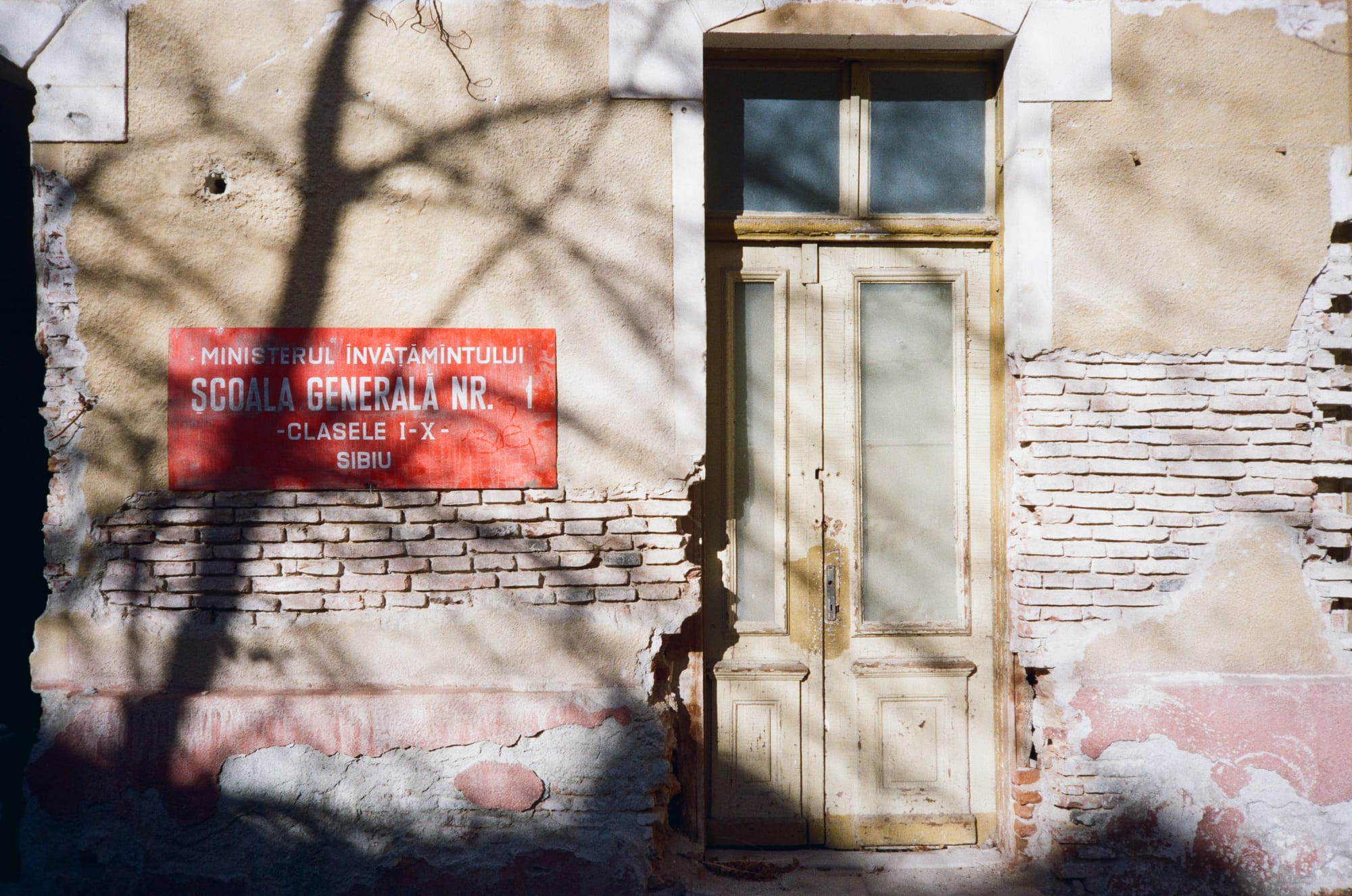
These people do not understand transition. They never have. From the tumultuous ’90s to EU accession, seventeen years was too short for them to comprehend the world they had suddenly inherited after the fall of communism. The complexities of capitalism. The weight of free thought.
In the ’80s, Gorbachev instituted change—glasnost, perestroika. In Romania, nothing. Darkness. Ceaușescu had looked east, not west. After visiting Kim Il Sung, he imagined a nation modeled after Juche. While the Soviet Union struggled with reform, Romania clung to isolation.
And then, overnight, the Iron Curtain collapsed. Freedom. No guidance. No manual. No transition. A country that had spent decades in darkness was now expected to function in the light. But how? Under communism, everyone feared everyone. Hundreds of thousands were ready to snitch—neighbors, friends, even family members. The Securitate had created a society of distrust. Self-preservation. Selfishness.
After the revolution, obedience was not an option anymore. Confusion took hold. So they retreated. To what they knew. To what felt safe. To childhood lessons. To old, simple values. To tradition. Because it was easier than thinking.
Excusing them is pointless. Arguing with them is pointless. Yet they decide. For us. For me. Millions of functional illiterates, swarming the polls. Casting their ballots without knowing what they are voting for. Without understanding how the electoral system works. Manipulated. Convinced. Certain they are right.
Maybe I was blind. Or maybe I wanted to be. Maybe this isn’t new. Maybe I’m only seeing it now. Or maybe I always knew and just chose to hope. I see it now. I was living in a bubble.
I realize, I had moved away to a place of relative ambiguity. Yet all I longed for was connection. In any form. Platonic. Romantic. But what makes my story different? What sets it apart from every other young adult at a crossroads? Isn’t this what everyone desires? To belong? To be seen? To be part of community of close friends to compensate for the misgivings and streaks of seclusion? Where do I fit in this myriad of stories, xeroxed from a template?
With every return comes my departure. Point. Counterpoint. I leave behind crowded cinema rooms, full of uncivil audiences, in what they call the capital of good manners. A saga of fuddy-duddies and their retrograde ideas. Ideas that reject change, diversity, modernity. A mirage of broken dreams. Reality in its barest form.
And with every return, the rift deepens. Widens. Returns I am forced to undertake. Returns that make the longing worse. For a specific connection. A specific someone. Their love. Their attention. Their presence.
Even for just a moment. A minute. A second. A text.
20:15. I pick up my phone. One new message. I'm sorry.
On my nightstand:
- Der Sprung – Simone Lappert
- Sonia ridică mâna – Lavinia Braniște
- Sexagenara şi tânărul – Nora Iuga
On repeat:
- Striptease – FKA Twigs
- Burning Hour – Jadu Heart
- Punish - Ethel Cain
- Velcro featuring Gus Dapperton – spill tab
- Bad Texter – Ryan Woods
- Pinie featuring orbit - Parra for Cuva
To bake:
- Buchteln with rose hip jam
- Marillenknödel
- Babka with poppy seeds
As I was about to leave my parents' garden, I noticed a small hedgehog hidden in the leaves piled in a corner. There was no wind. Time seemed to be suspended. A void. This place, where I spent over 18 years of my existence, feels foreign each time I return. It's as if I am a stranger here. A stranger in a garden tucked away in a forgotten corner of Eastern Europe. A garden full of flowers. And tomato plants. A garden filled with the scent of freshly cut grass beneath linden trees. A garden full of birds, with no wind to stir the leaves. Only the distant sound of dogs barking at ambulance sirens breaks the silence. As I closed the gate behind me and navigated the narrow street lined with parked cars, a deep nostalgia surrounded me, accompanied by a sense of heartbreak for a love that perhaps never was. Yet, I have no lost love to mourn. Am I experiencing love, or merely its mimic? Dostoyevsky’s words on love and suffering echo in my mind, yet I question, how can I ache for what I have not known? Or have I? What exactly am I longing for? What was the object of my love?

Sibiu (ger. Hermannstadt; hun. Nagyszeben) stands unchanged. Some buildings are refreshed. Some of them are crumbling. Some of them line on secluded alleys, untouched by time or modernity. Only the opening hours of the central post office, built in 1904, have been reduced. The building decays with each passing year, mirroring the aging faces of the women behind the counter, themselves unchanged by time. None of them have retired yet. I buy my stamps in silence and leave. Bookstores, cafés, and convenience stores appear untouched by time. In the lower town, the streets are lined with vibrant houses. Some large. Some small. All of them ancient. Sheltering the old. People and shops alike. Furriers, tailors, antiquarian bookstores. Inside one, I encounter an elderly man, possibly the owner. This was once Julius Kvanka Schneidermeister's workshop. The scent of old paper fills the air. I look at the books. Mihail Sadoveanu, Liviu Rebreanu, Fyodor Dostoyevsky. And many more. These books, like those in my grandmother's library, are relics of another era. Printed during communist times and rescued from oblivion. The elderly bookkeeper laments the dwindling interest in reading among the youth. He later reveals he has over 100.000 books in storage. Books that may never see the shelves—a grim reminder of Romania’s status as the EU member with the fewest active readers.
I leave the antiquarian and walk up to the Ursulines Convent (Ursulinenkloster), where I spent my early school years. Nora Iuga, from a generation long before mine, once sat on these same benches as the Second World War was taking Europe by storm. Passing by, I am haunted by her love letters to Sibiu. I reflect on her suffering from a love that never reached the depth she yearned for. Months ago, I gifted Sexagenara și tânărul (Die Sechzigjährige und der junge Mann) to a friend—the only edition in German I found. I'm still waiting for his review. Now, the school of our shared past lies in ruin. Shattered windows. Bolted doors. Extinguished lights. The inner courtyard, overgrown with vegetation, leaves no trace of the former school, except for the Salve inscribed above the entrance.
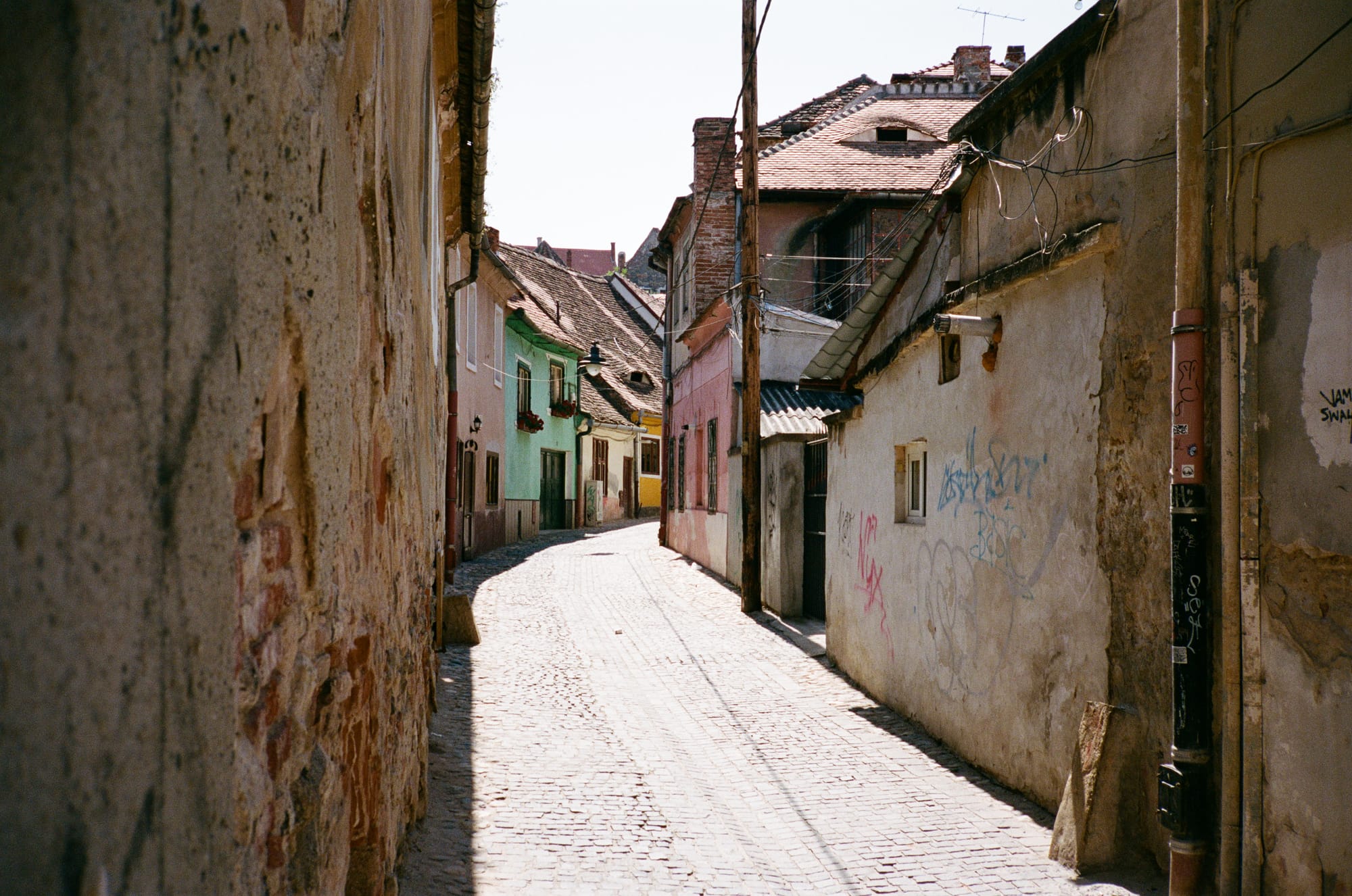
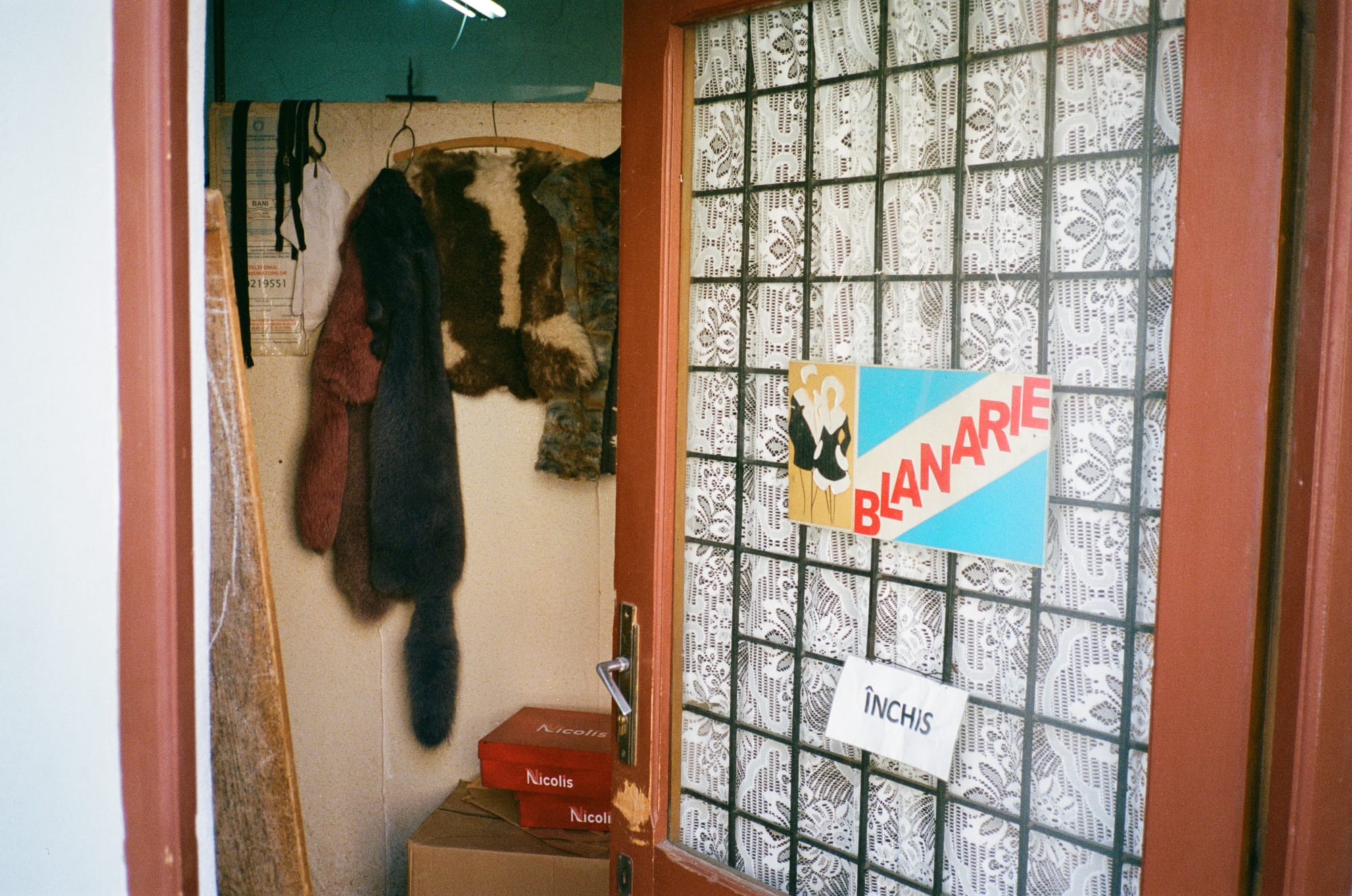
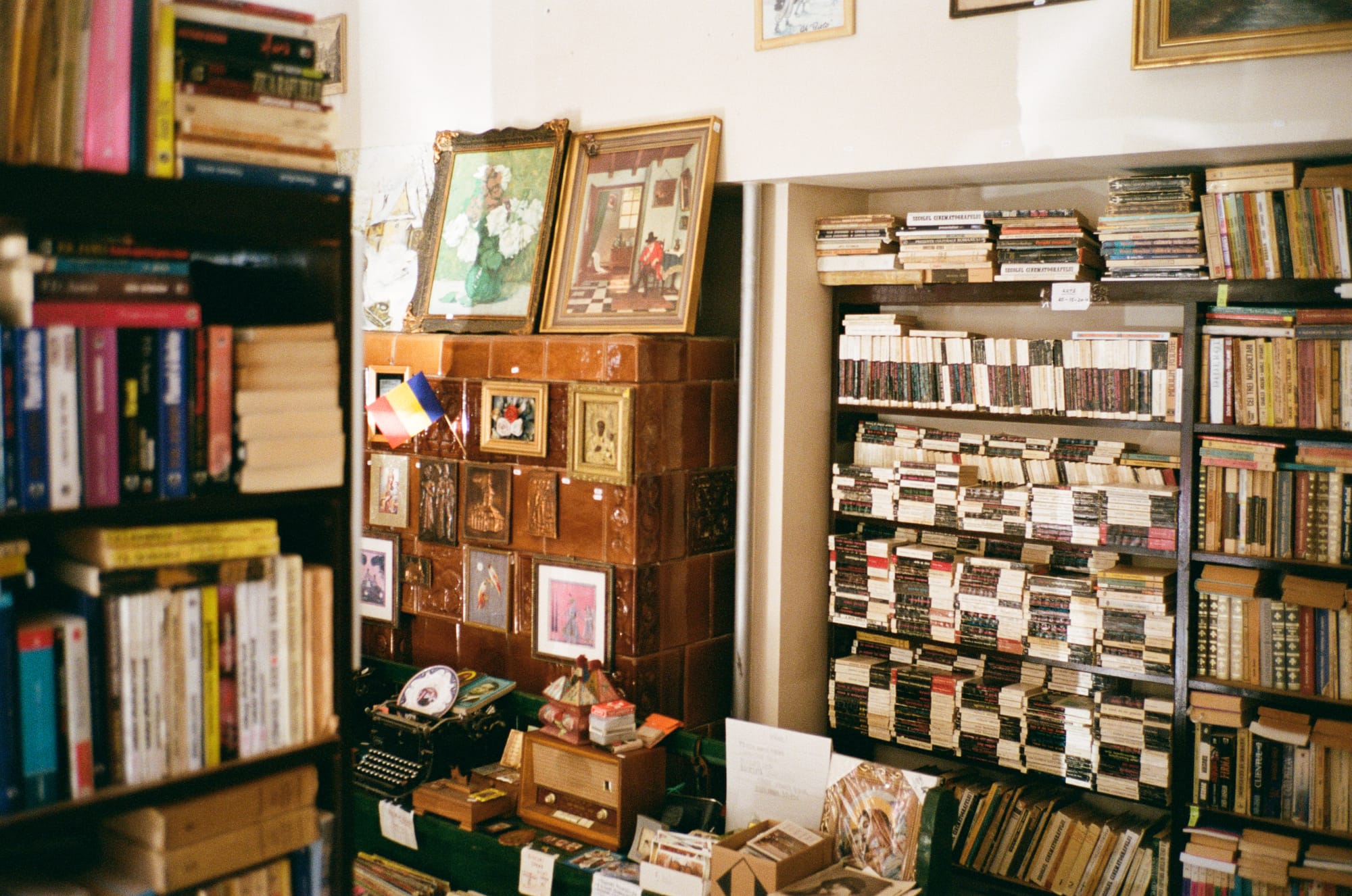


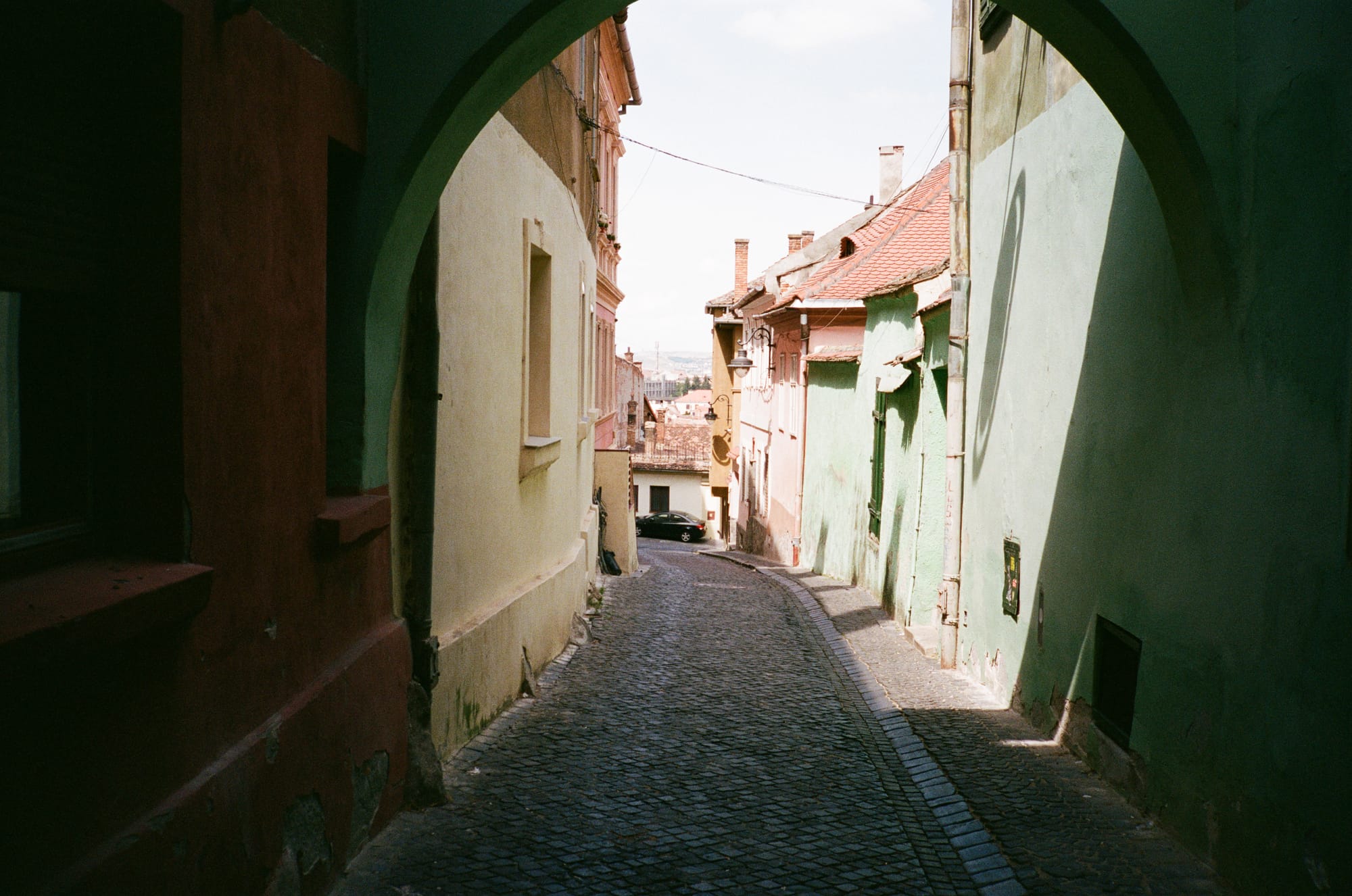
Scenes from Sibiu | Contax T2 | Kodak Portra 400
I waited for my memories to resurface. Long, dark hallways. The vast garden, encircled by the ancient city walls. The linden tree in the inner courtyard. The kiosk's microwave pizza with its sour ketchup. The auditorium where we danced. The carpeted classroom with its yellow walls. The warm smiles of our teacher. The way she wore her tailored blazers. The Madonna, overseeing from above the church entrance. These memories linger behind the red walls of what was once our school, now silent for fifteen years, its hallways abandoned.
The following day, I headed to Cetatea de Baltă (ger. Kokelburg; hun. Küküllővár). As the Transylvanian highlands bathed in the warm afternoon sun, I passed through villages, each holding stories of their inhabitants. I thought of Hanna, now over 80, living alone in a wheelchair in a small apartment in Sibiu’s upper old town. Born in the aftermath of World War II, Hanna's early life was marked by the Soviet occupation and its severe reprisals against the German minority. Her mother was deported to Siberia shortly after Hanna's birth, a fate shared by many. Rounded up and transported like cattle. A fate Herta Müller hauntingly describes in The Hunger Angel (Atemschaukel). The community was decimated. Families were torn apart. Many died along the way. Some of them returned. Many didn't. Hanna's mother eventually made her way back to Transylvania. But by then, Hanna was already in primary school, raised by grandparents she knew as parents. Her father had left right after her birth. She never met him. When Hanna finally faced her mother, she saw a stranger, not the mother she knew or hoped for. Hanna's life unfolded as a sequence of losses. Her mother to Siberia. Her husband to alcoholism. Her possessions upon emigrating to Germany in the 1980s, where she faced discrimination and struggled as a single mother in a society that often looked down on her. Ultimately, her sons distanced themselves from her. Later in life, she lost her partner to illness and her mobility to age. Yet, despite these hardships, Hanna retained her dignity.
Hanna’s story mirrors those of many Transylvanian Saxons who left their homeland seeking a new beginning away from the oppressive grip of the Socialist regime. Decades earlier, the Soviets decimated their community. Now, they searched for a home in Germany—a home that turned out to be illusory. They felt alienated, labeled Zigeunerdeutsche. They were outsiders in a supposed refuge—a place as foreign as the home they had left. Meanwhile, the land they left was forever altered, sealed off and inaccessible, no longer the home they remembered. It had become just a distant echo of their past.
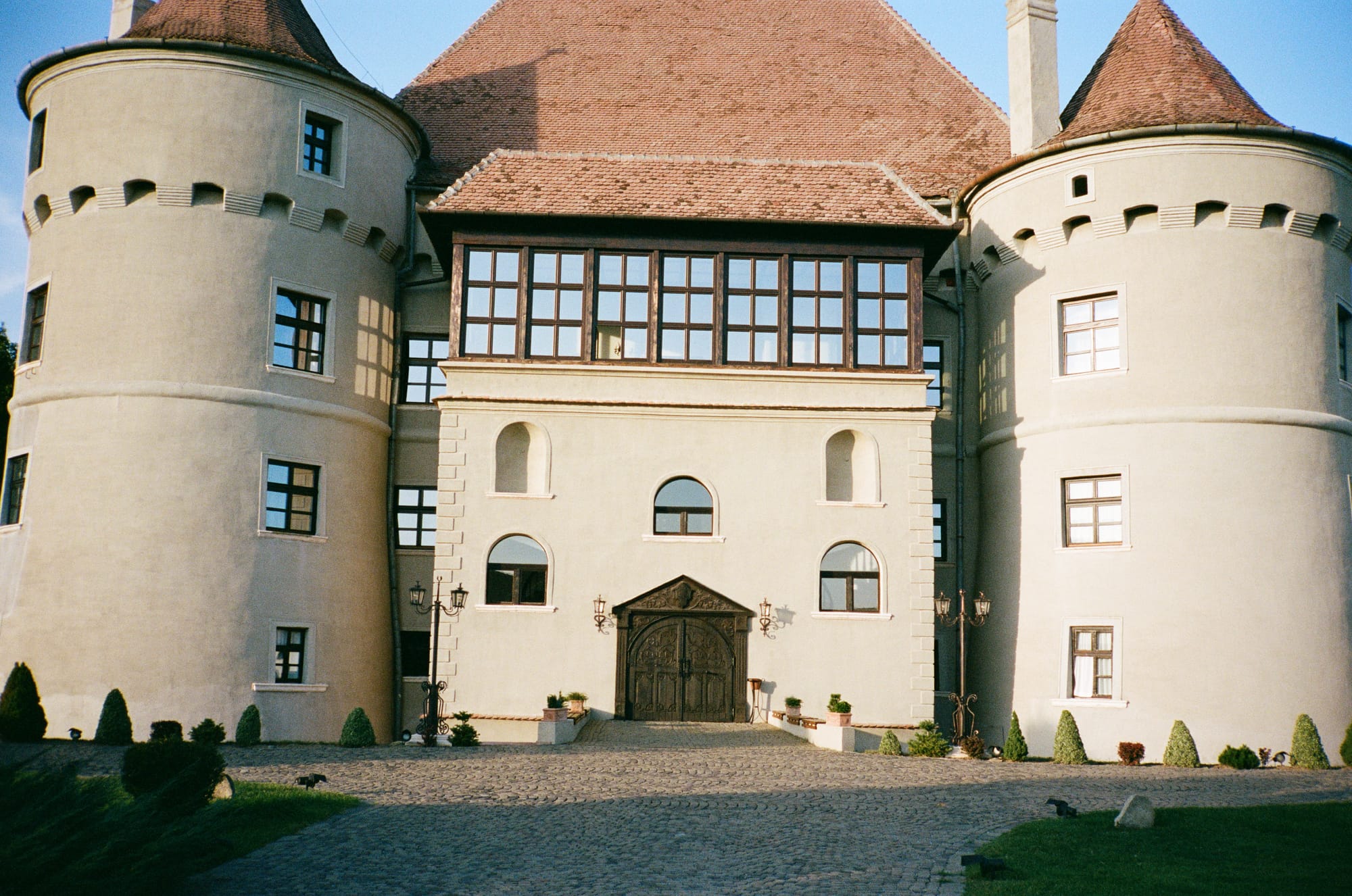
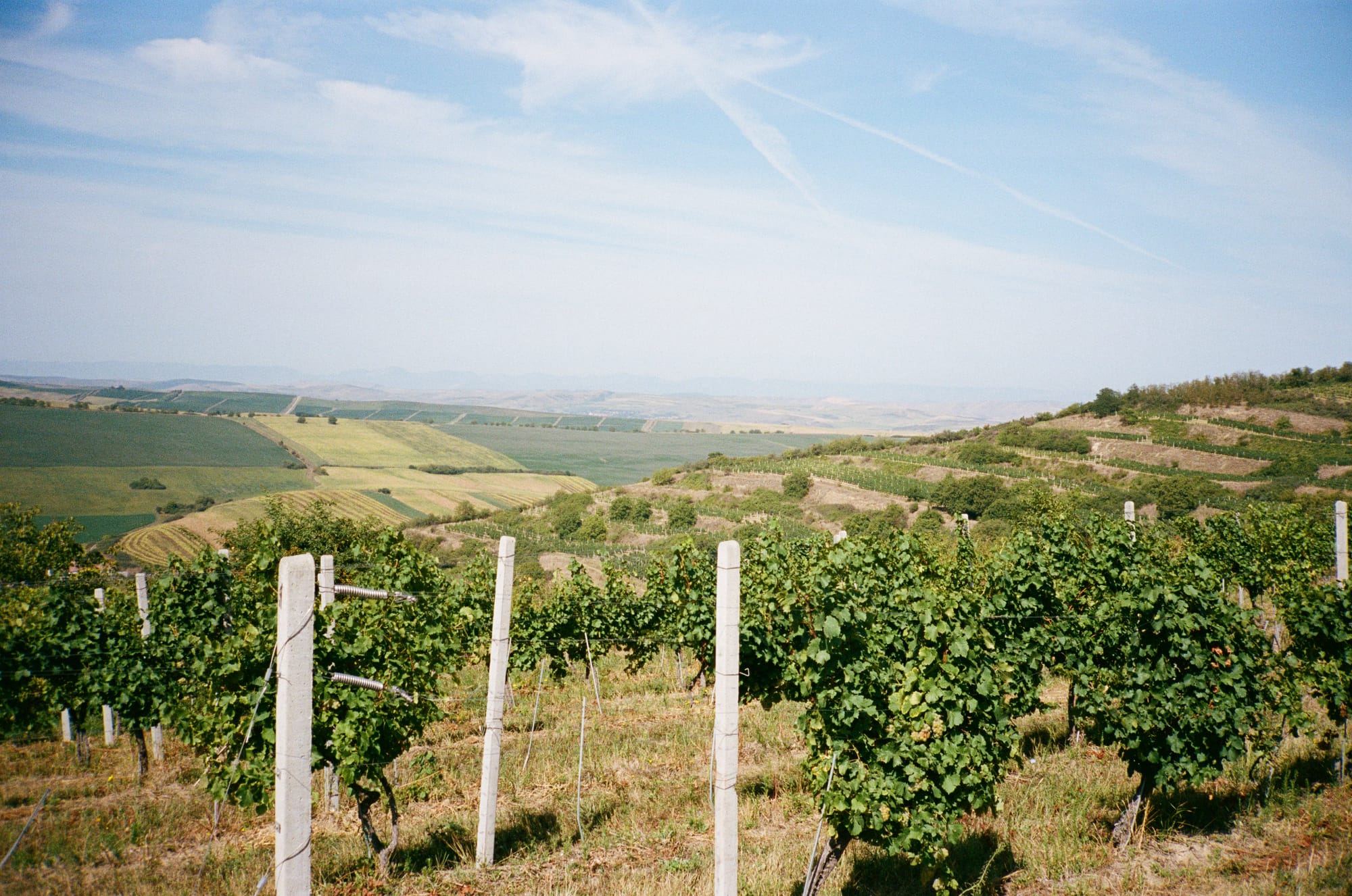
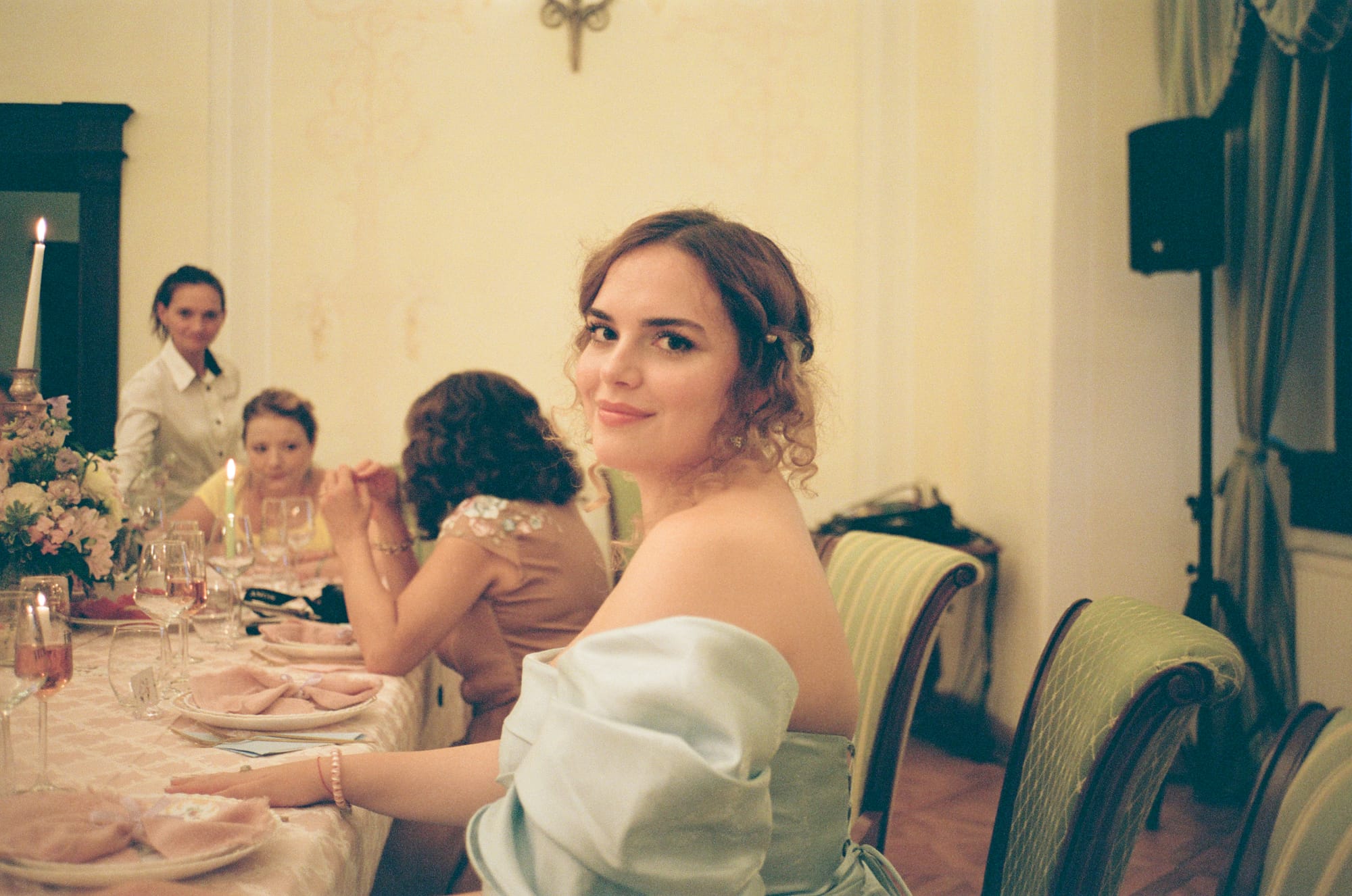
Bethlen-Haller Castle and my host, Arina | Contax T2 | Kodak Portra 400
Upon arriving at the Bethlen-Haller Castle, I was greeted by a golden sun. Perched atop a hill outside the village, the castle, built in French Gothic style, overlooked vast fields of grapevines—I was in the heart of the Târnava (ger. Kokel; hun. Küküllő) wine region. As I sipped white wine, my thoughts wandered off. What was the object of my inexplicable love? A person? A close friend? Or merely unmet expectations and unreciprocated feelings? The past? My identity? Myself? Amid the vineyards, I confronted the reality of my experiences: failed emotional investments, dashed hopes, and broken trust. I mulled over the fate of the castle, plundered by the workers of the IAS (state agricultural enterprise) Jidvei during communist times, its former degradation a testimony of greed and ignorance. This mirrored my own desire for clarity. Had I imagined a love that never truly existed? Was my disappointment rooted in reality or self-deception? I am reeling, breaking away from an illusion I had crafted. This is a love letter to a love that never was.
Back in Sibiu, my grandma awaited me. Her cooking felt like a comforting hug. We talked. About her past in the Soviet Union. Her encounters with the border guards. Her arrest by communist police. She recounted her struggles. We delved into my present and future. She had new stories too, about transgender teens she’d read about on her iPad. She spoke of her friends, aging and passing away. We talked about loneliness. About exodus. When it was time to leave, I said goodbye. Her eyes filled with tears every time I walked away.
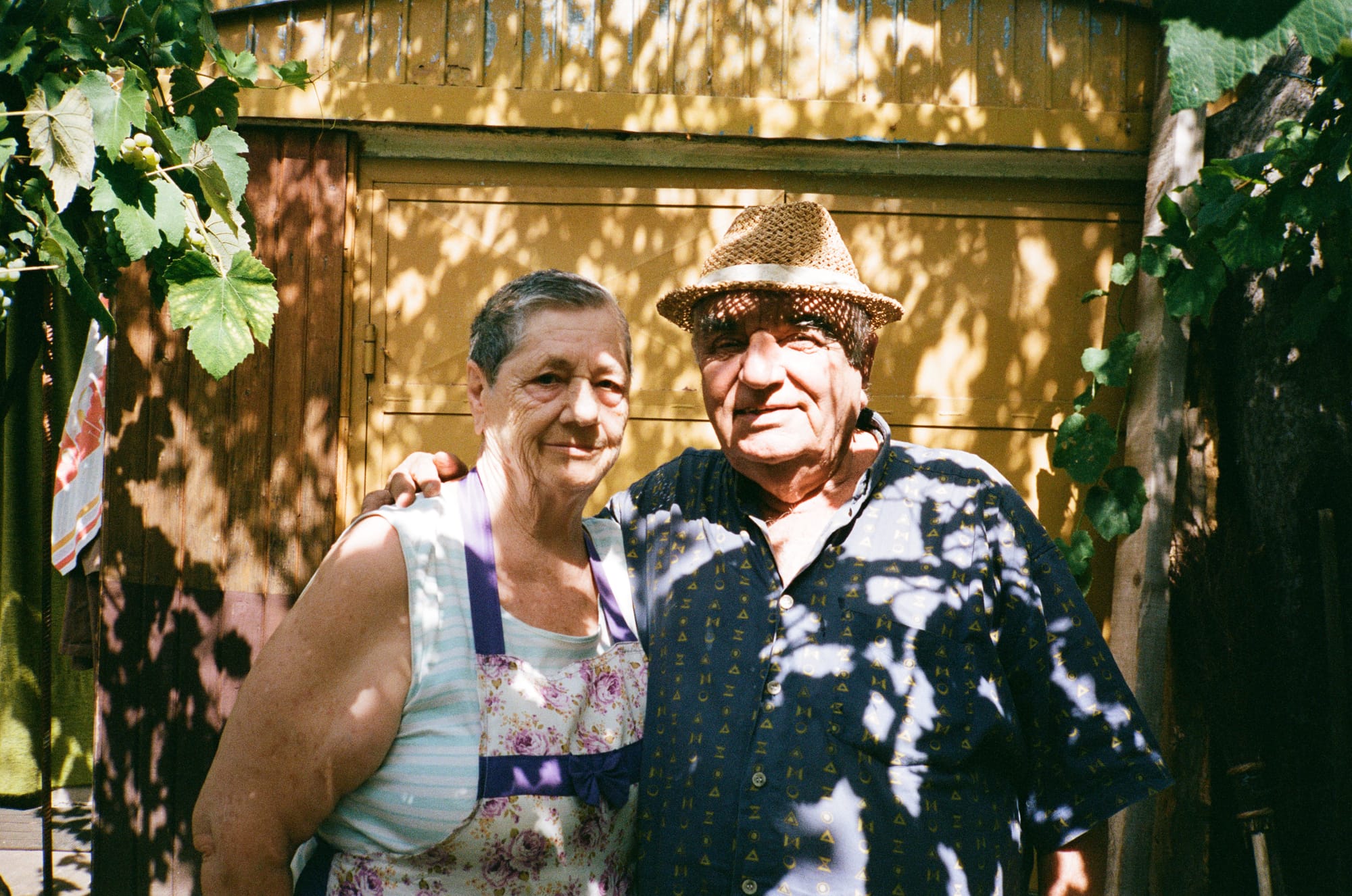
Before leaving, I took one last walk. I passed by the empty Synagogue. Its doors shut. Surrendered to nature’s reclaim. A silent witness to the town's once-diverse spirit. At Theresianum, an imposing bust of the empress presided over an abandoned and crumbling orphanage. In the 1990s, Western viewers glimpsed through grainy broadcasts on PAL and SECAM the shadows of children institutionalized behind the Iron Curtain. This exposure did little to foster empathy. Instead, it cemented a sense of Western superiority, reinforcing a narrative of Eastern European backwardness.
My early days at university in Zurich were marked by such perceptions. Questions about the bleakness of Romanian orphanages as if they were curiosities from another world, not realities of human suffering. This is the narrative of the new East—freed, yet held to impossible standards. Its rich culture overlooked. Its literature ignored. Geopolitically abandoned. Condemned for joining NATO. Perpetually misunderstood. Its people dismissed as beggars. Thieves. Swan eaters (Austria, 1990 and 2003). These labels were as grim as the landmarks I passed: the stone bridge and the Rieger Halls, once jewels of the industrial era, now mere eyesores.
The city, like me, is caught at a crossroads between a past it cannot fully embrace and a future it cannot fully comprehend. It embodies this paradox. A European Capital of Culture, yet full of decaying landmarks. A place of scientific excellence, yet faced with dwindling PISA scores. An exodus of historical minorities, yet with rising domestic migration.
The road to the airport leads through Turnișor (ger. Neppendorf; hun. Kistorony), the neighborhood of my early childhood. I remember the Saxon wagon home with its large garden. A garden bursting with roses my grandparents brought from Ciumbrud (ger. Poley; hun. Csombord). A garden shaded by plum trees. I remember the barn full of agricultural tools, and chasing As, the neighbor’s German Shepherd—the only dog I've ever loved. A dog I loved more than anything.
Weeks before my return, the Saxons who once called Transylvania home gathered here for their annual Sachsentreffen, returning to a homeland they had exchanged for the promise of a "better" life. A life they purchased with their possessions. A life subsidized by Germany which, in turn, financed Communist Romania for each émigré permitted to leave. Yet, this was a life disconnected from their roots. A life they would now readily abandon for a chance to revisit a home that had moved on without them.
As I prepare for takeoff, I find myself reflecting on Tonio Kröger, the protagonist of Thomas Mann’s eponymous short story. My previous disdain for the story perhaps stemmed from an unwillingness to confront the parallels between his life and mine. I have judged the Transylvanian Saxons for abandoning their ancestral homeland, yet how am I different? Perhaps I am even more culpable. I left as soon as I could. They at least stayed long enough to leave a mark. I left Transylvania, only to return as a stranger years later. My heart is torn between two worlds: the homeland I abandoned and the new life I attempt to establish in Switzerland. Have I forged meaningful ties there? Found a community? A circle of close people? Loved ones? Or am I as much an outsider there as I am here? Am I merely a ghost, belonging nowhere? Perhaps this is the love that never was. Or perhaps it’s about accepting my duality, much like Tonio Kröger.
I often find myself thinking about Hanna. About her struggles. About the moments shared at her home. I remember wearing her dresses, and how her Polish neighbor reacted with a prayer upon seeing me. Eating fries and chicken wings at 4 AM in her kitchen. Sleepwalking through her house. Hanna yearned to renovate her apartment in Sibiu and return. She eventually did, spending her final years in the place she felt she truly belonged. And I? Where do I belong? Maybe nowhere. Or everywhere. All at once.
To visit:
- Bethlen-Haller Castle at Cetatea de Baltă (ger. Kokelburg; hun. Küküllővár): for wine
- ASTRA Museum: for folk culture
- Brukenthal National Museum: for Romanian art
To eat:
- Plai: for fusion cuisine
- Crama Sibiul Vechi: for pișcăcioasă de vită and papanași
- The Kiosk in Cisnădioara (ger. Michelsberg; hun. Kisdisznód): for mititei with mustard
To recharge:
- Arhiva de Cafea și Ceai: for coffee and tea
- 5 Pâini 2 Pești: for bread and pastries
- House of Ellixirz: for cocktails
- NOD roastery: for coffee snobs
To buy:
- Anticariat Strada 9 Mai (ger. Elisabethgasse) Nr. 47: for old books
- B'ART Events & Flowers: for flower arrangements
- Schiller Buchhandlung: for postcards
On repeat:
- Lily – Joe P
- Found Somebody – Birskie
- Fairytale Gone Bad – Sunrise Avenue
- Midnight City – M83
- Allein Allein – Polarkreis 18
On streaming:
- Industry – Season 3 (on Max)
- Abbott Elementary – Season 3 (on Disney+)
- Only Murders in the Building – Season 4 (on Disney+)
The train halted at Keleti station, and the few passengers in our coach disembarked. It's the same station where Middle Eastern refugees first arrived in Central Europe during the Syrian Civil War. Images of people sleeping in and around the station had circulated globally. Now, a gloomy emptiness greeted me at noon. The passengers had already departed, and the regional services were long gone. Only a few elderly people and some young festival-goers, searching for the Sziget Festival, broke the desolate quiet. A bus carried me to Andrássy út, and from there, a short walk along the avenue led me to my hotel. As I wandered along the tree-lined streets of central Pest, a profound sense of familiarity and belonging swept over me—a home away from home, complete with Lángos takeaways, late 19th-century architecture, and elegantly dressed elderly women who, despite the scorching 35°C, still walked with stylish resilience.

Traveling used to be an escape mechanism, or so I thought. This time, however, I found myself deeply immersed in my thoughts. But somehow, I was at peace. I felt at home. After all, Transylvania was under Hungarian—and occasionally Austrian—rule for almost a thousand years. The Hungarians settled in the Carpathian Basin in the 9th century, with their influence reaching Transylvania a century later. The darker periods of our cohabitation, especially after the Austro-Hungarian Compromise of 1867, created a rift that ultimately led to a breakup. Economically speaking, Transylvania thrived under Hungarian governance. Transleithania was economically more homogeneous than the principalities at the distant edges of the Austrian Empire in Cisleithania. Yet, paradoxically, Hungary struggled with its ethnic minorities. The policy of forced Magyarization ignited deep ethnic conflicts, which seemed resolvable only through a bittersweet divorce.
As I walked down Andrássy út, my thoughts drifted to an alternate history of Transylvania, one in which it was part of the United States of Greater Austria (Vereinigte Staaten von Groß-Österreich)—a vision of Aurel Popovici, supported by Archduke Franz Ferdinand, aimed at solving ethnic conflicts through federalization. However, this plan dissolved into the what-ifs of history. Could such a vision have steered Hungary away from its shift to the right? After all, the Treaty of Trianon lingers as a scar in the collective memory, constantly revisited in FIDESZ's rhetoric and Viktor Orbán’s campaigns. By the time these thoughts settled, the check-in process completed almost unnoticed. The Art-Nouveau windows of my room offered a view of the Opera House and the bustling avenue below—a stark contrast to my quiet thoughts.
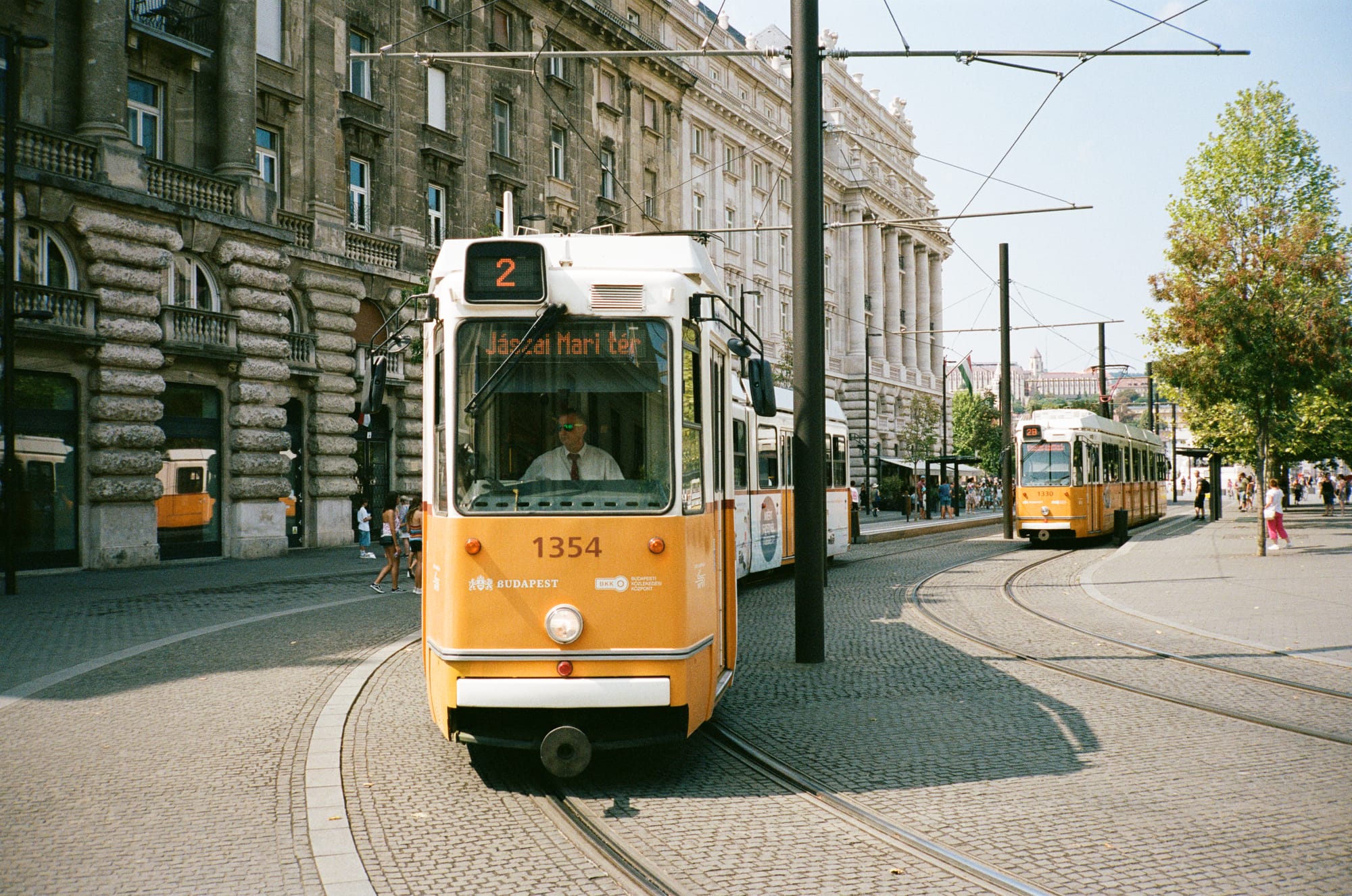


Around Kossuth Lajos tér | Contax T2 | Kodak Portra 400
Soon after, I stepped outside. The torrid heat of the afternoon struck me, turning my bucket hat into a miniature greenhouse atop my head. Thankfully, my thinning hair—or lack thereof—offered some relief. I found myself in the Jewish quarter, or what remains of it. The enormity of the synagogues, like the Dohány Street Synagogue—the largest in Europe—marked Budapest's robust Jewish heritage. The rhythm of my days became a predictable cycle: breakfast, sights, coffee, cakes, a brief dinner, followed by a retreat to the hotel. The evenings were correspondingly full, filled with long baths and longer thoughts. Ceiling gazing. Wondering. Analyzing. Questioning.
Throughout my stay in Budapest, remnants of the past guided me. From the Transylvanian coat of arms on the Hungarian Parliament to memorials dedicated to Petőfi Sándor, Hungary’s national poet, who perished in Sighișoara (ger. Schäßburg; hun. Segesvár), battling the Russians. With each step through the city, a sense of familiarity followed. The elderly woman selling paprika at the market. The cube house exhibition at the Ludwig Museum. The layers of Dobos torte at Ruszwurm. And last but not least, the paintings of the Nagybánya artists' colony on display at the Hungarian National Gallery. Originally conceived as a summer retreat, the colony eventually turned into a permanent creative hub. Baia Mare (ger. Frauenbach; hun. Nagybánya), a quaint little town in Northern Transylvania, fostered the modernization of Hungarian art under Simon Hollósy's guidance. The plein-air paintings of his students, which adopted Western modern styles, now adorn the walls of Buda Castle.



Scenes from the Central Market Hall | Contax T2 | Kodak Portra 400
These retrospectives were mere droplets that retreated into the silence of my inner thoughts. Each scene became immortalized in my consciousness. At Buda Castle, amid hundreds of American tourists disembarking from Danube cruises to visit the Matthias Church and the Fisherman's Bastion. Along Bartók Béla út, where people of all ages and sizes emerged from the Gellért Thermal Baths for a light evening meal and a hearty ice cream. Along Váci utca, I was reminded of why I should have avoided the street altogether. In Massolit, where a young barista recognized my Monocle bag and excitedly mentioned their feature in the magazine, despite never having read it before. And at Bambi, where I savored a lemonade in a setting that could only be described as comparable to a hotel lobby in 1960s Brașov (ger. Kronstadt; hun. Brassó).
I suppose I never truly figured out what was going on within me in Budapest. I didn't find the answers to all my questions. Yet, amidst this uncertainty, I unexpectedly found a piece of home.
To visit:
- Hungarian National Gallery (in the Buda Castle): for Hungarian art
- Hungarian Parliament: for neo-Gothic architecture
- Robert Capa Center: for contemporary photography
- Ervin Szabó Library: for imperial tranquility
- Urania Film Theatre: for arthouse cinema
- Jewish Quarter: for vibrant ruin bars
- Klauzál Market Hall: for the Malév birds
- Gellért Thermal Bath: for Art-Nouveau self-care
- Fisherman's Bastion: for spotting American tourists in the wild
To eat:
- Pinczi Butchers: for Virsli
- Gettó Gulyás (despite the tourist hype): for Chicken paprikás
- Rosenstein: for Gulyás
- Nagyi Lángos: for Lángos
- TATI: for Hungarian fusion
- Béla: for Lecsó
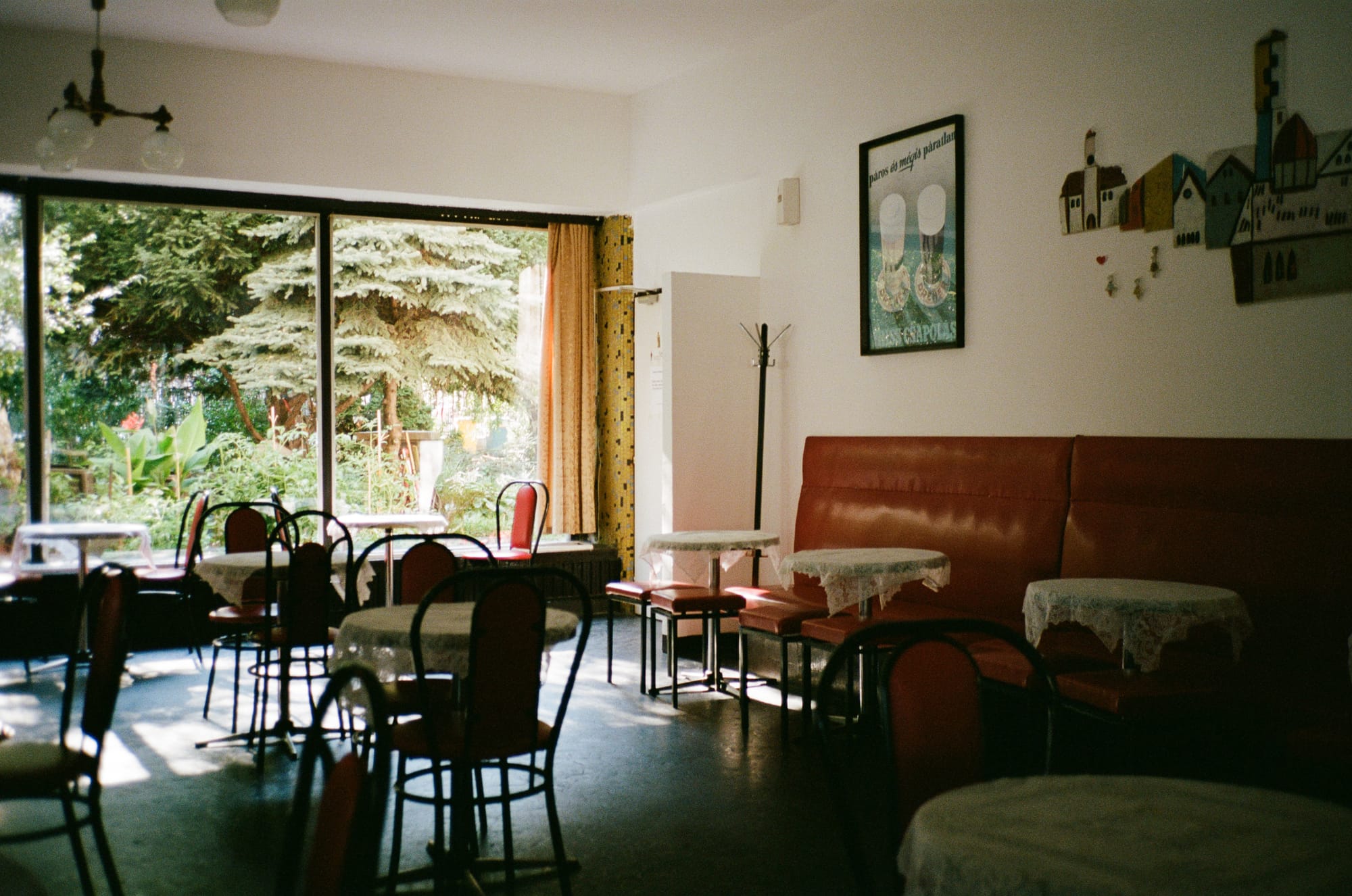
To recharge:
- Babka Deli: for Babka and Guba
- arán bakery: for pastries and wonderful sandwiches
- Ruszwurm: for Esterházy torte
- Babmbi: for lemonade
- Cube and Kelet: for coffee
- Mikrokosmos: for Krémes ice-cream
- espresso embassy: for coffee snobs
- W Lounge at the W Budapest: for Aranygaluska
To buy:
- Analog Cafe and Budachrome: for photographic film
- Massolit: for tea, English novels, and beautiful postcards
- Central Market Hall: for paprika (opt for locally sourced over industrially produced)
- Supermarkets: for Pöttyös (Túró Rudi; a classic curd snack)
On repeat:
- Osama – Zakes Bantwini & Kasango
- What Once Was – Her's
- For You – Zimmer90
- Lifetimes – Katy Perry
On my nightstand (recommendations from a close friend):
- Aus unseren Feuern – Domenico Müllensiefen (The trauma of loss and the bleak perspectives of life in the former GDR after reunification; a coming-of-age story with hints of a crime novel; found it quite challenging)
- Nino und der Wunsch nach mehr – Yvonne Eisenring (Airport lecture)
It's midnight. I’m scribbling these thoughts aboard a cramped Lufthansa Bombardier CRJ900, bound for what I once called home. The cabin, dimly lit and sleepy, awakens under the halo of my reading light. The quiet is often disrupted by the loud interactions of a mother and her two children, who are making themselves heard from behind me. The children are buzzing with excitement. Perhaps this is their first flight. Every now and then, I peer out the window into the darkness. The full moon casts a pale yellow glimmer, illuminating the black sky with its delicate light. A recent conversation about the moon surfaces in my thoughts. A friend wondered if the Supermoon influences our moods—maybe it does, maybe not. I haven’t mulled over it much, nor have I consulted Co-Star recently, nor do I plan to for the foreseeable future. For now, esoterics, cosmology, and tidal forces are beyond my mental capacity.
The woman behind me accidentally spilled coffee on herself. I suspect her son played a part. She’s visibly exhausted, yet in a way, we are kindred spirits—except I’m without children. The difference, though, is her resilience. She still finds the energy to laugh. Her laughter, loud and contagious, cuts through the jet lag. Meanwhile, I retreat into the cinema of my thoughts. These are brief flicks—small photoplays—interrupted by brief dips into reality. Then the reclusion returns. For a few minutes. A thought emerges. A sudden return to the present, and back again. The film reel continues to play. Just like a Super 8 film, my thoughts run at 18 frames per second, each 3-minute reel looping vividly through my consciousness.
As we hover above the vast and lonely Hungarian puszta, I'm attempting to address the question I initially intended to when I opened my journal: why am I starting a blog? Am I experiencing a quarter-life crisis? This doesn't seem so far-fetched at first glance. After all, my 25th birthday is just around the corner. Maybe. Maybe not. Probably not. I guess not. I don't know. Yet, I feel a compelling need to share and write. Considering all that's on my plate with the PhD, why on earth would I start a blog?
The children behind me are throwing temper tantrums. I struggle to maintain focus against this chaos. Their mother is trying to catch some sleep before we descend. As a side note, Budapest at night is breathtaking. I realize this as we pass above it. Die Lichter von Budapest, as a certain law professor would title his book, indeed shine brightly. Similarly, a fervent desire to share and connect glimmers within me. Perhaps this is the reason I embarked on this journey. Or perhaps I finally listened to the advice of a friend who enjoys my Letterboxd reviews and has long encouraged me to start a blog. It might be all of these reasons combined.
In all honesty, I don't really know what I'm doing. However, I do know that I won't be just another Carrie Bradshaw. And just like that, the thought of Carrie fades into oblivion as we make our descent into the Transylvanian Highlands. I suddenly notice a distinct smell—someone has farted. The culprit must be either in front of or behind me. I quickly turn on the air nozzles. I can't help but grin at the absurdity of it all. The boy behind me is screaming. Safe and Sound by Capital Cities blasts through my AirPods, yet it battles in vain against the screams. The synth beats are uplifting. Perfect for bad days. Or good days. Or any in-between.
At this point in space and time, I can't give you a definitive answer about what this blog will be about. I'm still figuring it out myself. Perhaps it will be a collection of random thoughts. Culture talks. Travel anecdotes. Life outtakes. Maybe it's my way of directing what happens next, much like how I'm learning to use my new Super 8 Camera—a 1972 Canon Auto Zoom 814 Electronic I purchased from Kleinanzeigen. But first, I'll need to buy some ECN-2 film rolls when I get back to Zurich.
On repeat:
- Going Kokomo – Royel Otis
- Rollercoaster – Bleachers
- Guess featuring Billie Eilish – Charli xcx
- Iris – The Goo Goo Dolls
On my nightstand:
- The Years – Annie Ernaux (I intended to finish this memoir before leaving for Romania; alas, I didn't manage to do it)
- ca și cum nimic nu s-ar fi întâmplat – Alina Nelega (I've been postponing this book for far too long)
